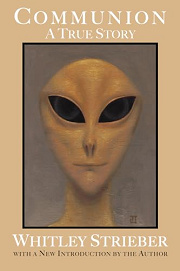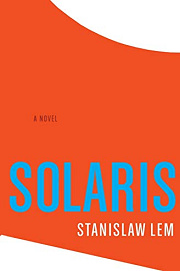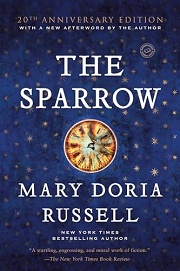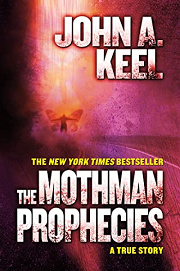Share your thoughts in a quick Shelf Talk!
Communion by Whitley Strieber
A bestselling account of uncanny visitations and fractured memory, Communion invites readers into a chilling mystery at the edge of belief—where the night sky holds questions that won’t let go.
Have you read this book? Share what you liked (or didn’t), and we’ll use your answers to recommend your next favorite read!
Love Communion but not sure what to read next?
These picks are popular with readers who enjoyed this book. Complete a quick Shelf Talk to get recommendations made just for you! Warning: possible spoilers for Communion below.
In Communion, did you enjoy ...
... the disorienting, first-person encounter with the unknown—and the sense that the narrator may not be telling you everything?
Annihilation by Jeff VanderMeer
If the cabin visitations, missing time on December 26, 1985, and Whitley’s hypnotic regressions left you fascinated by how memory warps around terror, you’ll sink right into Annihilation. The Biologist’s field journal about Area X reads like Whitley’s own account: intimate, elliptical, and increasingly unreliable as she descends the “Tower” (that’s really a tunnel), meets the Crawler, and edits her own past on the page. It’s the same eerie blend of confession and enigma you felt in Communion—a private mind against an inexplicable presence.
... the deep psychological confrontation with an unknowable intelligence that seems to read and remake you?
Solaris by Stanislaw Lem
Strieber’s “Visitors” press not only on his life but on his psyche—fear, shame, wonder—and Solaris strikes that same nerve. When Kris Kelvin reaches the sentient ocean of Solaris and is confronted by a resurrected version of his lover, Rheya, he’s forced (like Whitley under hypnosis with Dr. Donald Klein) to face the parts of himself he can’t control or fully comprehend. The alien contact isn’t techy spectacle—it’s a mirror. If you were gripped by Communion’s inward spiral, Kelvin’s haunted intimacy will feel devastatingly familiar.
... a human-centered, emotionally and spiritually charged take on first contact and its aftermath?
The Sparrow by Mary Doria Russell
If the raw, personal focus of Whitley’s ordeal—his family, his fear, his attempt to make meaning—hooked you, The Sparrow offers that same human-first lens. Father Emilio Sandoz joins a Jesuit mission to the planet Rakhat, and what he brings back is trauma, faith in tatters, and a need to tell the story piece by piece. Like Communion, the speculative elements serve the social and spiritual questions: how a person endures contact with the “other,” and what faith or identity survives the encounter.
... reality-blurring encounters with entities that may be external beings—or invasions of the mind?
The Three Stigmata Of Palmer Eldritch by Philip K. Dick
If the owl “screen memories,” shifting faces of the Visitors, and the terror of not knowing what’s real in Communion got under your skin, PKD’s hallucinatory classic will do the same. Barney Mayerson’s forays into the Chew-Z experience put him in thrall to the ever-present Palmer Eldritch—complete with the chilling stigmata—that may be god, devil, alien, or all three. It’s that same visionary dread Strieber evokes: a presence that follows you out of the experience and into your waking life.
... an on-the-ground investigation into high strangeness—visitations, Men in Black, and ominous coincidences?
The Mothman Prophecies by John A. Keel
If you were drawn to Whitley’s real-world sleuthing—the upstate cabin, the patterns around owls and visitors, the efforts to document and test his memories—Keel’s chronicle in Point Pleasant will scratch the same itch. He logs encounters with the Mothman, Indrid Cold, and Men in Black, chasing synchronicities much like the patterns Communion teases out of fear and missing time. It’s reportage that slides into the uncanny, exactly where Strieber’s investigation lives.
Unlock your personalized book recommendations! Just take a quick Shelf Talk for Communion by Whitley Strieber. It’s only a few questions and takes less than a minute.





